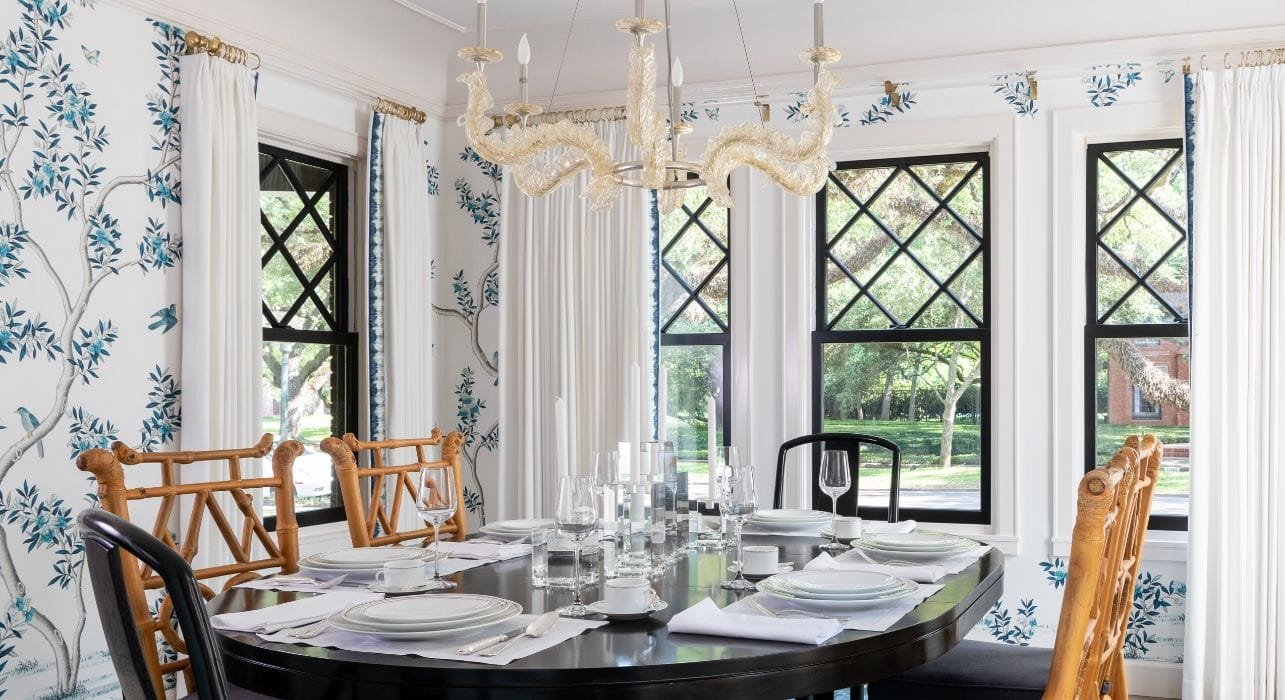Chinoiserie has been around since the 17th century. It’s nearly impossible to flip through an interior design magazine without seeing chinoiserie elements show up. The iconic blue and white ginger jar may be the most recognizable chinoiserie piece, but this global design style embraces far more. Today, I’m sharing a guide to chinoiserie to help you discover the history and motifs of one of my favorite Asian-influenced design styles.
THE FAR-AWAY HISTORY OF CHINOISERIE
The word chinoiserie comes from the French word chinois, meaning “Chinese” or “after the Chinese taste”. Chinoiserie didn’t come directly from Asia. Instead, it’s a European interpretation of East Asian design. As trade with Asia flourished in the 17th and 18th centuries, the chinoiserie style soared in popularity.
Few Europeans traveled to Asia. Their limited knowledge of the region caused some misunderstandings, but they developed a great respect for Asian art and culture. They were intrigued by these “exotic” cultures and began creating their own versions of East Asian designs. The highly ornamental rococo style was a beautiful match to the fanciful designs of chinoiserie. It wasn’t long before chinoiserie was gracing the palaces of King Louis XV and King George IV.
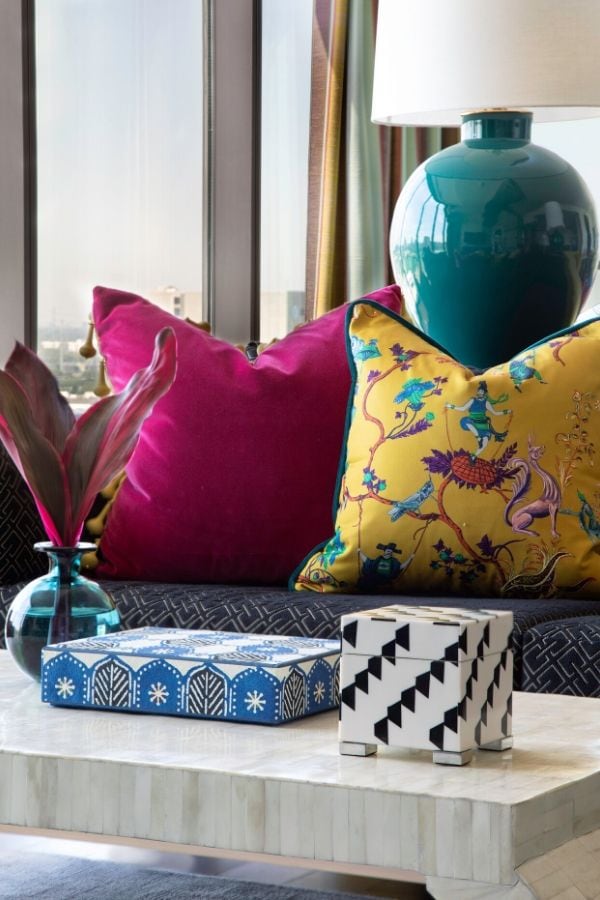
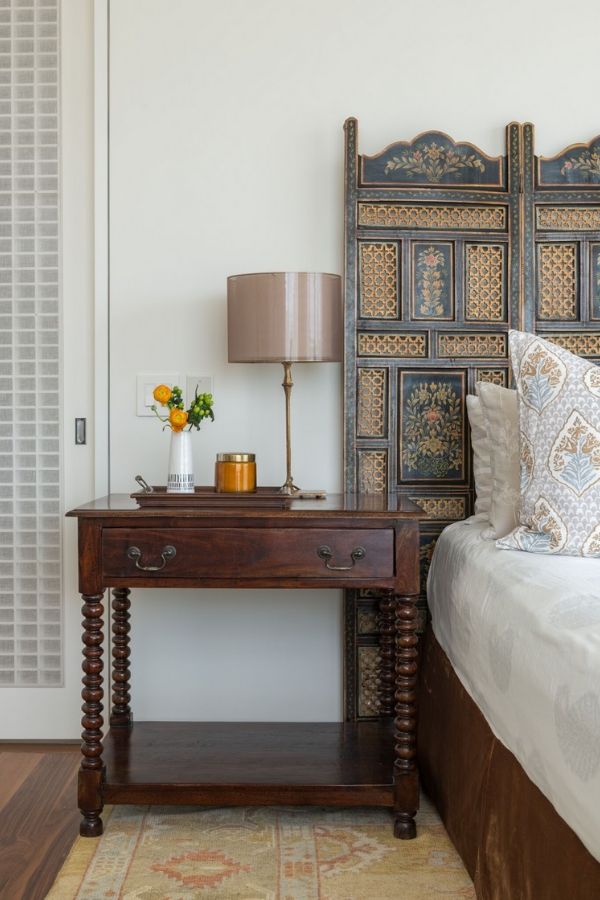
Tea exports rose and Europeans quickly adopted the culture and tradition of drinking tea. As a fundamental part of society, aristocratic ladies desired to create the appropriate chinoiserie mise-en-scène for their tea rituals. This strengthened the European demand for chinoiserie pieces.
A GUIDE TO CHINOISERIE: KEY ELEMENTS OF THE STYLE
DRAGONS
The dragon plays a prominent role in Chinese folklore. It’s a mythical beast symbolizing strength and luck. Dragons are often seen on ceramics, silk screens, and other decorative objects.
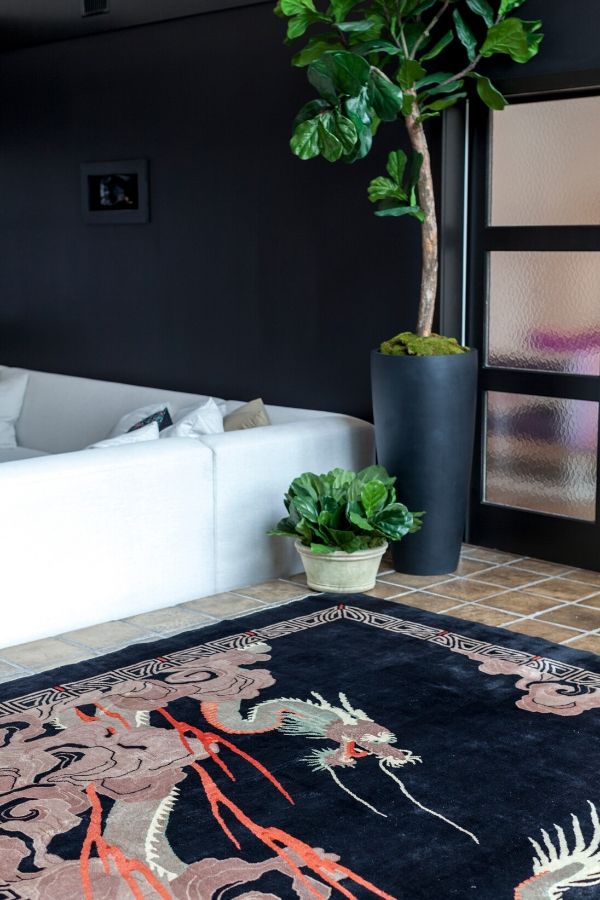
FOO DOGS
Foo dogs are a common motif in the chinoiserie style. However, they aren’t dogs. They’re known as Shi, which means “lion” in Chinese and appear in pairs, one male and one female. Believed to ward off negative energy, they are often placed outside temples and palaces.
NATURE SCENES
Bold, whimsical nature scenes with pavilions, birds, and rambling floral motifs are popular in the chinoiserie style. Europeans favored this design for wallpapers and screens, which were often handmade and expensive.
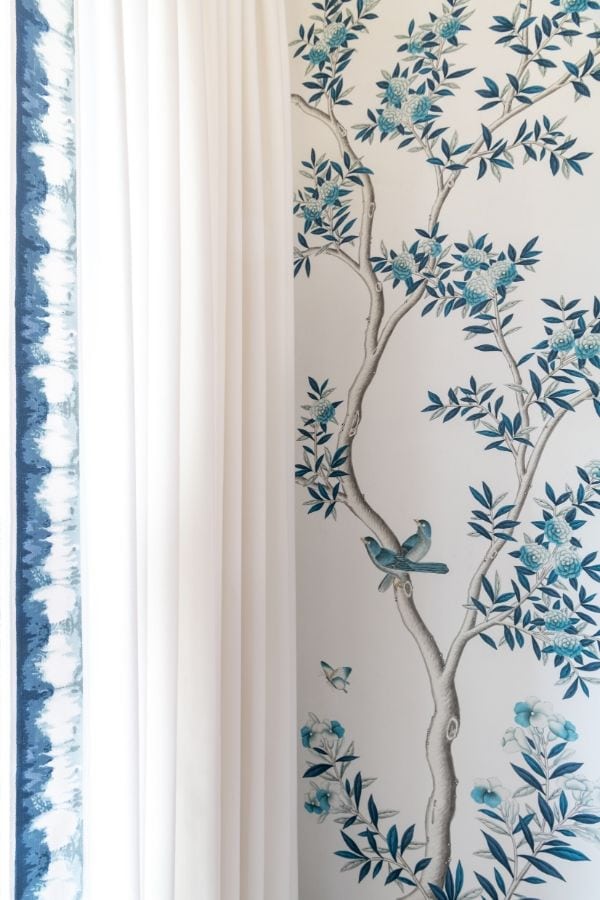
PAGODAS
The pagoda originated in India and arrived in Asia with the spread of Buddhism. These multi-tiered buildings serve as sacred religious sites and are an integral component of East Asian architecture.
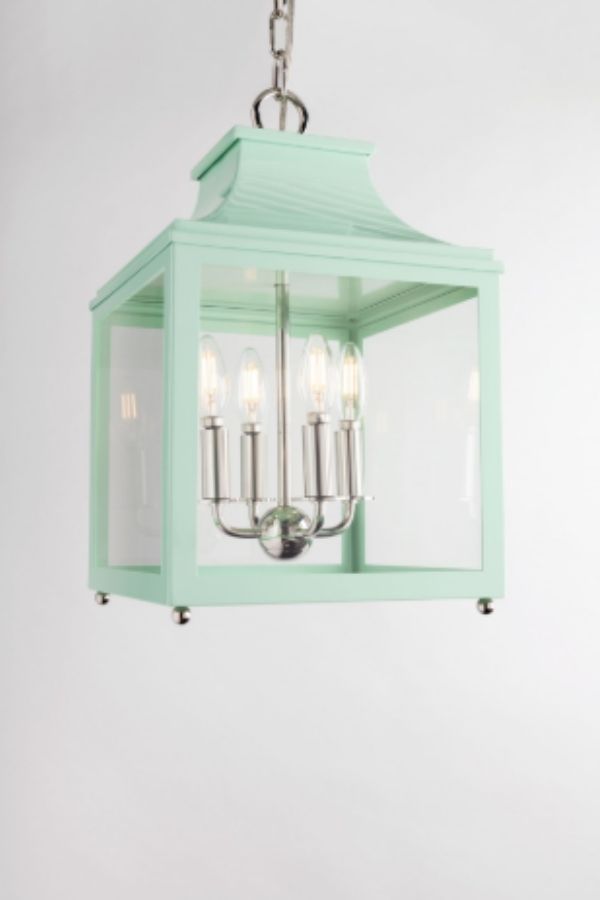
A GUIDE TO CHINOISERIE: FURNISHINGS AND MATERIALS
MATERIALS
Faux bamboo and lacquered wood are two of the most popular chinoiserie materials. The art of creating traditional Asian lacquerware pieces is a slow, meticulous process. Artisans coat pieces of furniture with layers of tree sap. The sap hardens into a durable resin that gives the furniture its signature shine. Oftentimes artisans hand paint scenes, inlay details, or create intricate carvings to finish the piece.
FURNISHINGS
The chinoiserie style can be found on everything from wallpaper to chairs and decorative objects. Many furnishings include graceful lines that mimic pagoda tiers and carved ornamental designs called fretwork. Thomas Chippendale, a notable 18th century chinoiserie furniture designer, drew upon Chinese fretwork as inspiration for his lattice-back Chippendale chair.
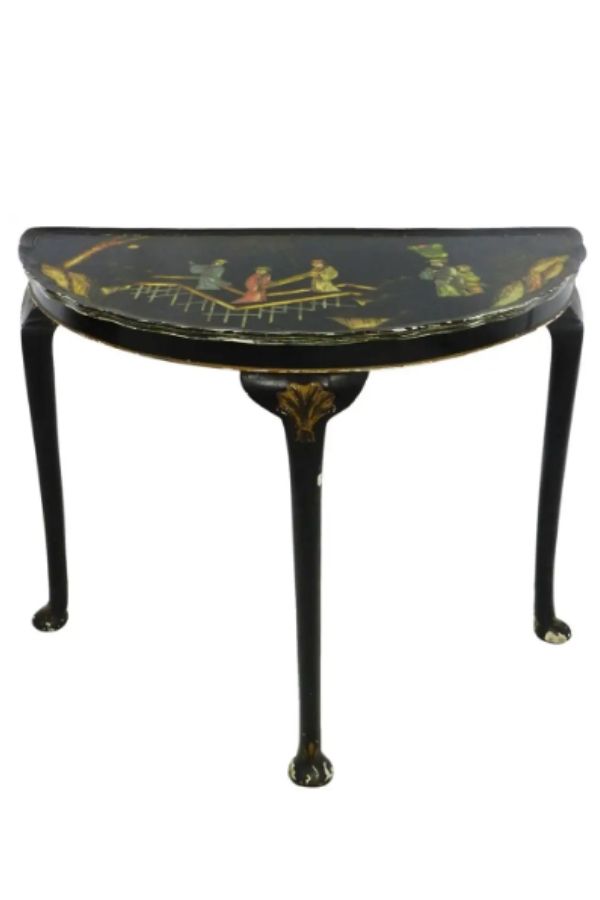
A GUIDE TO CHINOISERIE: CERAMICS
Chinese porcelain takes a high-level of skill and craftsmanship to produce. That’s why chinoiserie ceramics and porcelain are some of the most sought after pieces. Europeans were never able to replicate the same quality porcelain, but they did copy the designs. Designers used the traditional blue and white Ming style design on pieces like jars, vases, and tea sets.
Ceramic and porcelain vessels, like ginger jars, were often used as spice storage containers. As trade with China blossomed, the demand for ceramics rose, but took on purely aesthetic purpose. These prized pieces were placed throughout the home, securing their place in history as classic decor.
AGELESS APPEAL OF CHINOISERIE
Chinoiserie is an art form inspired by the world. The blend of elegant European design with intriguing, exotic East Asian artistic traditions is versatile enough to work with every interior design style. Whimsical designs, lush garden scenery, and embellished finishes contribute to chinoiserie’s worldly aesthetic.
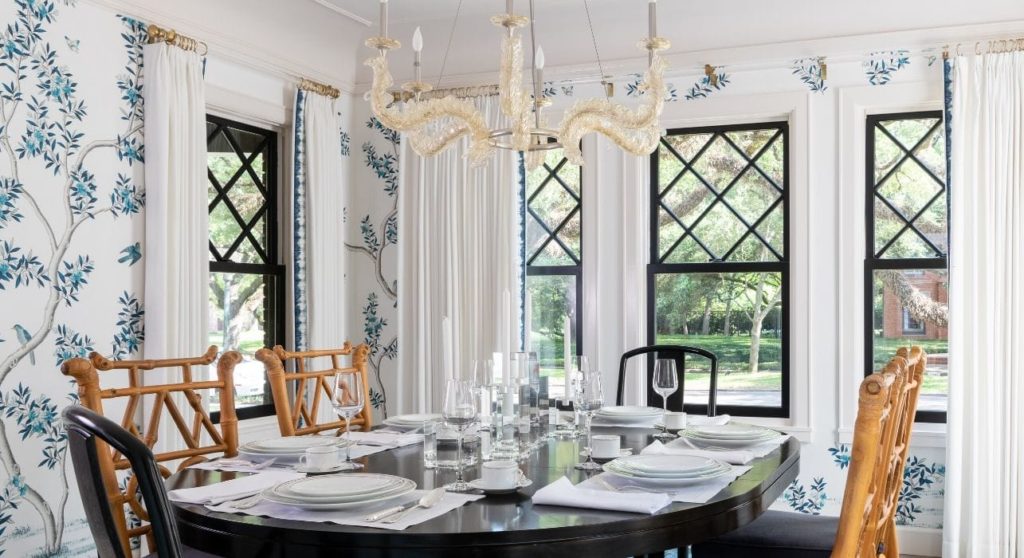
INSPIRATION FOR MY TAI PING CAPSULE COLLECTION
When Tai Ping invited me to create a capsule collection, I knew the classic elements of the chinoiserie style would play a role. My designs draw inspiration from Chinese fretwork, antique screens, and blue and white ginger jars.
Whether I’m designing Classically Current interiors or products, my desire is to bring iconic designs of the past into the present. To make the collection feel fresh and modern, I chose a mid-century inspired color palette and luxurious textures. The contemporary interpretation of the patterns proves how timeless chinoiserie is.


